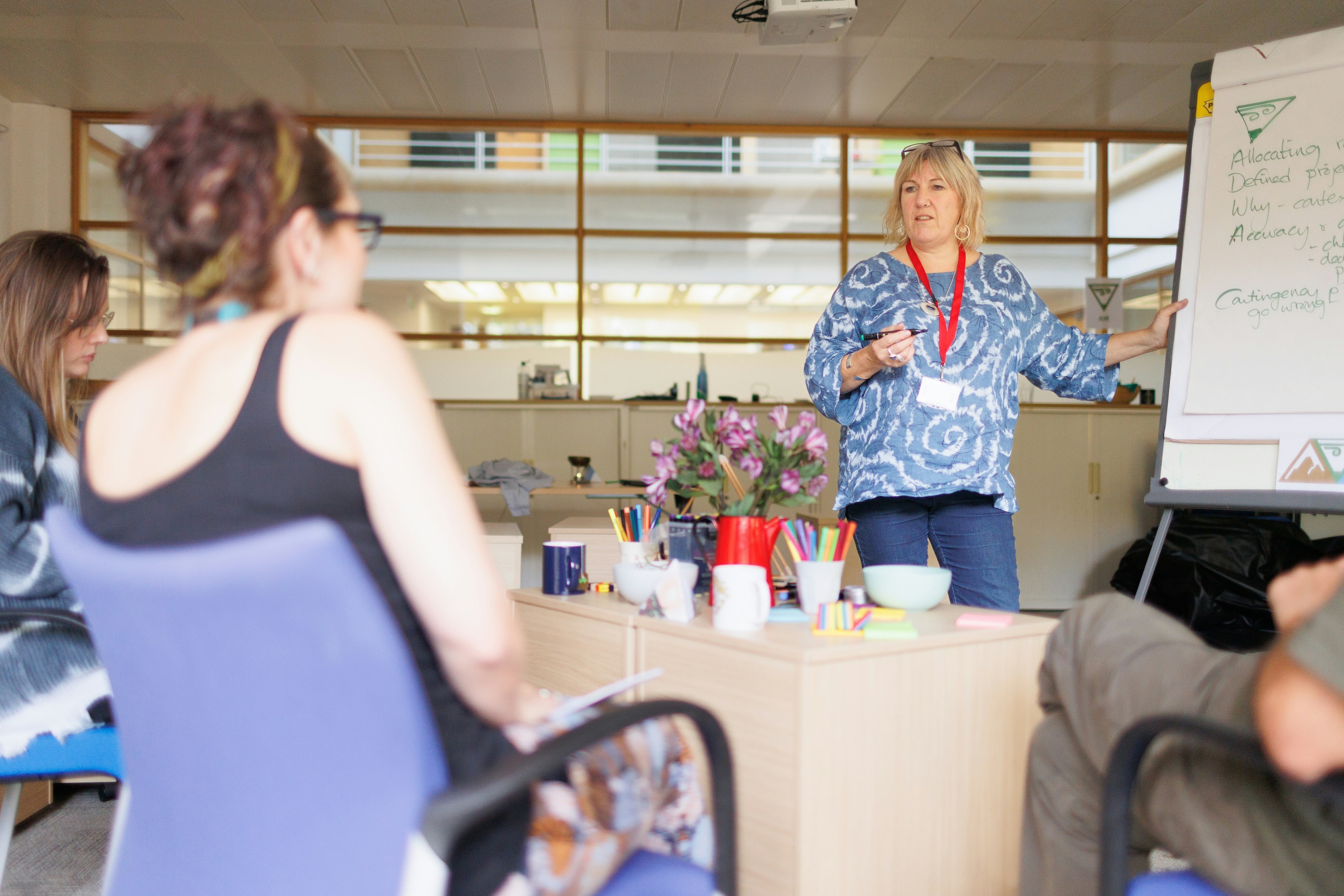Forget the start-up garage myth. We need golden triangles and super clusters

Facing the future: there are strong ties between academic institutions and innovation Image: REUTERS/Paul Hackett
One of the most powerful myths surrounding technology entrepreneurs is that of their journeys beginning in a humble garage. The founders of Amazon, Apple, Dell, Disney, Google and Microsoft have all made this claim.
Hewlett Packard really does have roots in a garage – at 367 Addison Avenue, Palo Alto. HP’s first product, the HP200A audio oscillator, was manufactured there in 1939 and used to test sound equipment. Yet, like many other entrepreneurial stories, its origins actually lay in a research university.
This early hit for HP – eight were sold to Disney for its production of Fantasia – did not just magically emerge from the imagination of Bill Hewlett and Dave Packard working in the latter’s Stanford garage. It can be traced back to Hewlett’s Master’s thesis at Stanford University, where he enjoyed access to cutting-edge technology, fellow enthusiasts and the guidance of legendary electrical engineer Fred Terman, one of the entrepreneurs’ lecturers.
If you visit 367 Addison Avenue, a plaque marking the “birthplace of Silicon Valley” will greet you - denoting the origin of the greatest tech cluster of them all. And it is clusters, not garages, that accelerate innovation. It is clusters that bring together start-ups, established corporates, specialist and aligned businesses, and, very importantly, research-intensive universities.
Steve Wozniak disavows the garage myth around Apple – perhaps a product of his co-founder Steve Jobs’ “reality distortion field”. The Homebrew Computer Club connected Jobs and Wozniak to a network of fellow enthusiasts – many with access to university computing and engineering facilities. Jobs’ course in calligraphy at Reed College inspired him to build Apple’s personal computers with beautiful typefaces and design.
Time and again it is access to the brains, equipment and collaborative environment of research universities that spurs on great innovations and high-growth companies. This is seen in most of the high-growth vibrant technology clusters around the world.
New York’s cluster of fast moving firms, including Buzzfeed, Foursquare and Tumblr, working at the interface of technology and media, are sucking in talent and taking advantage of collaboration with the city’s universities.
In Bangalore, where the International Institute of Information Technology (IIIT-B) cultivates brilliant computer scientists, specialist firms in high tech services and outsourcing, such as InfoSys and Wipro, are clustering and growing fast.
The same dynamic is at work in cities such as Berlin and Tel Aviv, and it is especially apparent in London. Such is the intensity of world-class universities, tech-savvy consumers, start-ups, availability of finance and culture, that London can more fairly be described as a ‘supercluster’, or cluster of clusters. These intense concentrations of innovation in and around universities are forging ahead in artificial intelligence, fintech, medtech, life sciences, design and fashion. Whatever the consequences for Britain post-Brexit, London is likely to continue to be a magnet for entrepreneurs.

In AI, bright young entrepreneurs such as Rob Bishop and Zehan Wang, who met as students at Imperial College London, found the community, mentorship and resources that connect academia and business. Their machine learning visual processing firm Magic Pony was recently sold to Twitter for $150 million. Bishop and Wang plan to stay in London to help develop Twitter’s global AI R&D centre. Their success came soon after Microsoft bought another London AI spinout, Swiftkey, for $250 million.
The AI clusters emerging around universities in London, Oxford and Cambridge are connecting in what is being called the ‘golden triangle’. Amazon, Apple and Google have invested hundreds of millions in Cambridge and Oxford AI startups such as Evi, Vocal IQ and Deepmind.
Universities, historically the quiet heart of clusters, are playing a more active and assertive role. Harvard’s innovation lab has helped more than 75 companies get off the ground since 2011. Imperial Incubator has seen scores of spin-outs connected to Imperial College agglomerate and grow on campus. In less than a decade – from the basement rather than a garage of an academic building – Imperial Incubator firms have attracted more than $1 billion in investment.
Major corporations are developing their ability to replicate and engage with the collaborative innovation of universities. In the UK, the drug company, GSK, and telecoms company, BT, are creating their own clusters, encouraging universities to engage with them. Since its 2014 launch, Microsoft Garage – there’s the word again – allows its staff to work with academic-like freedom on projects unrelated to their core roles. Staffers and student interns collaborate across the 114,000-strong workforce. Failure is encouraged, but so is rapid adoption of new features and ideas that come out of the Garage. Vastly different areas of expertise mix, just like at the best universities. Ambitious projects are nurtured. As the Microsoft Garage motto commands, “Do epic s—t”, expressing the same sentiment, if not the exact language, of great universities.
Successful technology businesses can be fantastic myth-makers. Many have stories of questionable veracity, typically involving that perennial of start-up lore: the modest garage. In reality, however, their ideas frequently originate in university laboratories and lecture rooms. Those ideas turn into innovations in clusters, within which universities play vital roles, including the provision of spaces and facilities for start-ups.
Don't miss any update on this topic
Create a free account and access your personalized content collection with our latest publications and analyses.
License and Republishing
World Economic Forum articles may be republished in accordance with the Creative Commons Attribution-NonCommercial-NoDerivatives 4.0 International Public License, and in accordance with our Terms of Use.
The views expressed in this article are those of the author alone and not the World Economic Forum.
Stay up to date:
Innovation
Related topics:
Forum Stories newsletter
Bringing you weekly curated insights and analysis on the global issues that matter.
More on Education and SkillsSee all
Jumoke Oduwole and Abir Ibrahim
November 11, 2025







